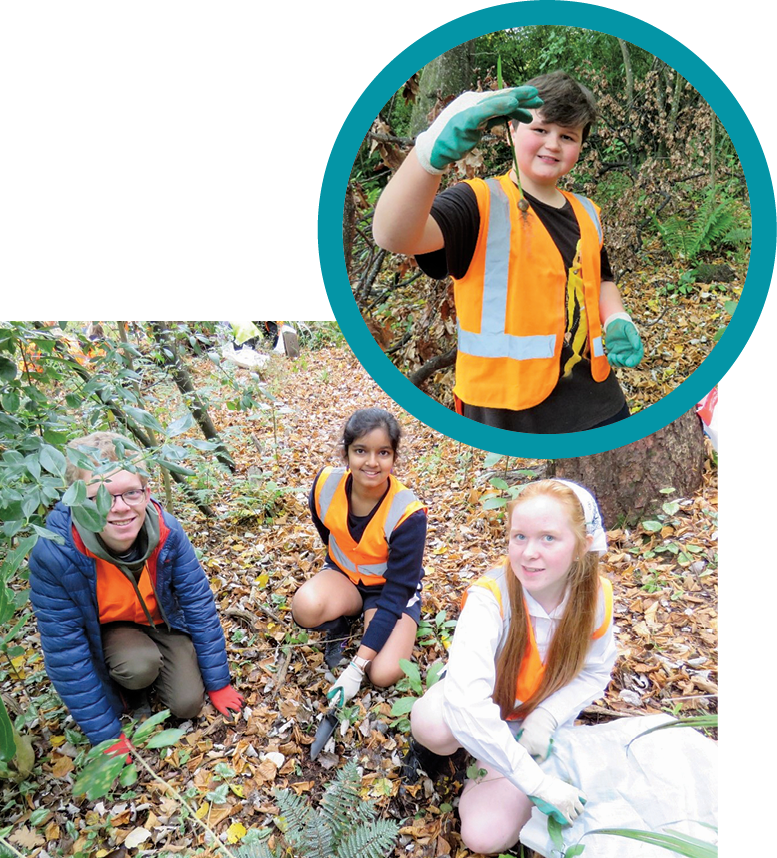-
-
-
-
-
-
-
-
-
The Source - July
-
-
-
-
-
-
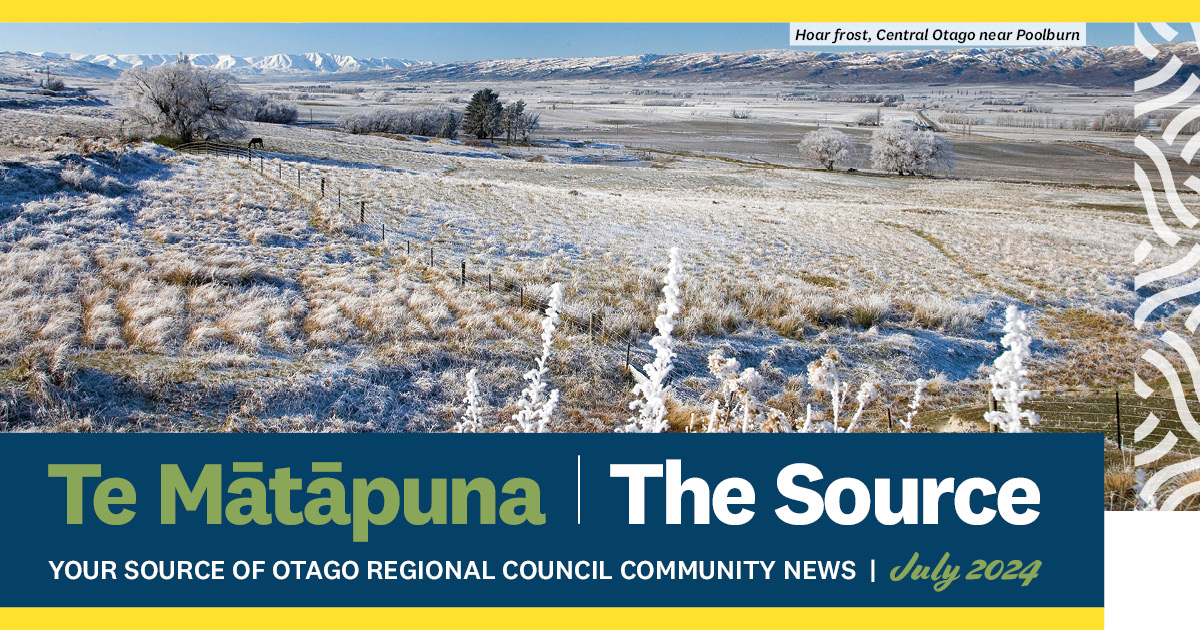
Tēnā koutou katoa!
As we find ourselves in the heart of winter, it’s natural to feel the urge to hunker down, stay warm, and hibernate. However, even during these colder months, it’s important to stay connected to family, community, and the unique places that make Otago home.
At the Otago Regional Council, we have been focusing on fostering and supporting these connections. Our work on the Long-Term Plan has benefitted from the input of hundreds of residents. This year’s consultation highlighted two main projects: enhancing public transport and advancing environmental initiatives. Both are key to strengthening community connectivity.
While these two areas received special focus, our work programmes for the coming years cover a wide range including climate change resilience, flood schemes, 24-hour pollution response, navigational water safety, civil defence, biodiversity, biosecurity, urban planning, and catchment management. We appreciate the many ideas and submissions on all areas of council work, each of which has been considered.

Further community engagement is under way through an upcoming representation review. With significant growth in Central Otago/Queenstown Lakes, the council will consider reducing one councillor in Dunedin and adding one in the Dunstan constituency.
As we navigate these midwinter months, let’s remember to stay engaged with each other and our environment. Together, we can ensure that Otago remains a connected, vibrant, and resilient region.
Warm regards,
Gretchen
Check out our new and vastly improved website that has just launched. It includes a new design that is user friendly across different devices, and a dedicated Orbus section designed for a mobile view first with improved navigation — so people can find information faster while on the go!
 Among the many customer-friendly features, the new website has:
Among the many customer-friendly features, the new website has:
- Easier access to a range of ORC services through a ‘Do it online’ section which makes it easier for people to pay rates, apply for a consent or grant, report pollution, and much more.
- Orbus-branded public transport pages that look and feel like an app. Just save the Orbus homepage on your mobile for easy access to bus info!
- Te reo Māori woven into the top two navigation tiers.
- Contemporary Māori designs —created especially for the website — that represent different areas of council’s work and reflect ORC’s partnership with mana whenua.
- Improved navigation and search functions, including a new A–Z finder bar.
- A new ‘Get involved’ section to promote environmental projects you can help with, as well as events, meetings, and public feedback/consultation activities.
As part of the redesign, we reviewed hundreds of pages of web content to ensure that current information is easier to find and more relevant. 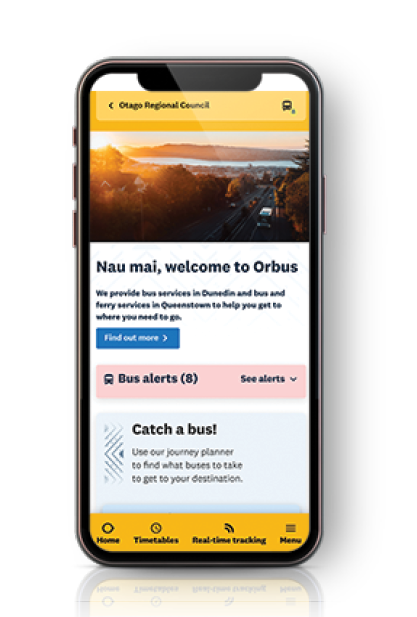 The previous website had remained largely the same since 2017. Since then, advances in technology meant that we had an opportunity to ensure its thousands of website users had a vastly improved experience.
The previous website had remained largely the same since 2017. Since then, advances in technology meant that we had an opportunity to ensure its thousands of website users had a vastly improved experience.
ORC Chief Executive Richard Saunders says he’s proud of the collective mahi that ORC staff, Aukaha (a mana whenua-owned consultancy) and Effect (digital web development partner) have done to bring the new website to the public.
“People should notice a big improvement in usability wherever they are, and be able to find information more seamlessly than before. The website has become a critical tool to both inform people about the work that we do, and help customers and ratepayers get important tasks done.”
Go online and take a look: orc.govt.nz
 Terminator, decline of the conifers
Terminator, decline of the conifers
We are already using drone technology to support pollution response and compliance inspections, but did you know these flying robots are also fighting wilding conifers?
Our partners, the Central Otago Wilding Conifer Control Group (CWG), are currently undertaking a trial with contractor SPS Automation using a drone to survey for wilding conifers using Artificial Intelligence on a 470-hectare block. After that, a larger drone goes in and sprays the trees based on the survey drone’s data. We’re hoping this trial will allow the tech to progress to where we can use it on much larger landscape areas — we’ll be back!
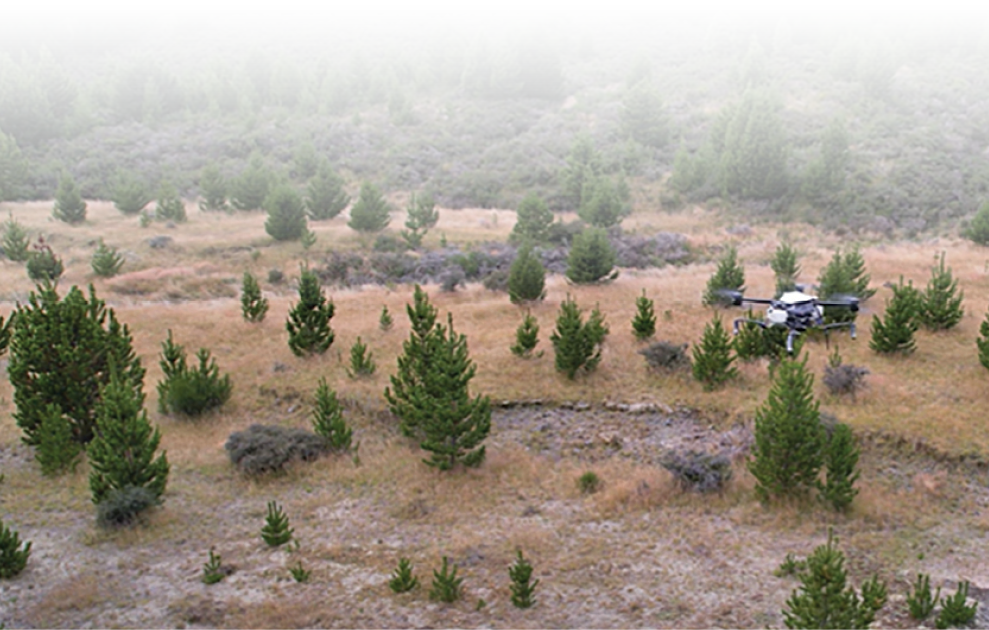 A drone flies over a field of wilding trees
A drone flies over a field of wilding trees
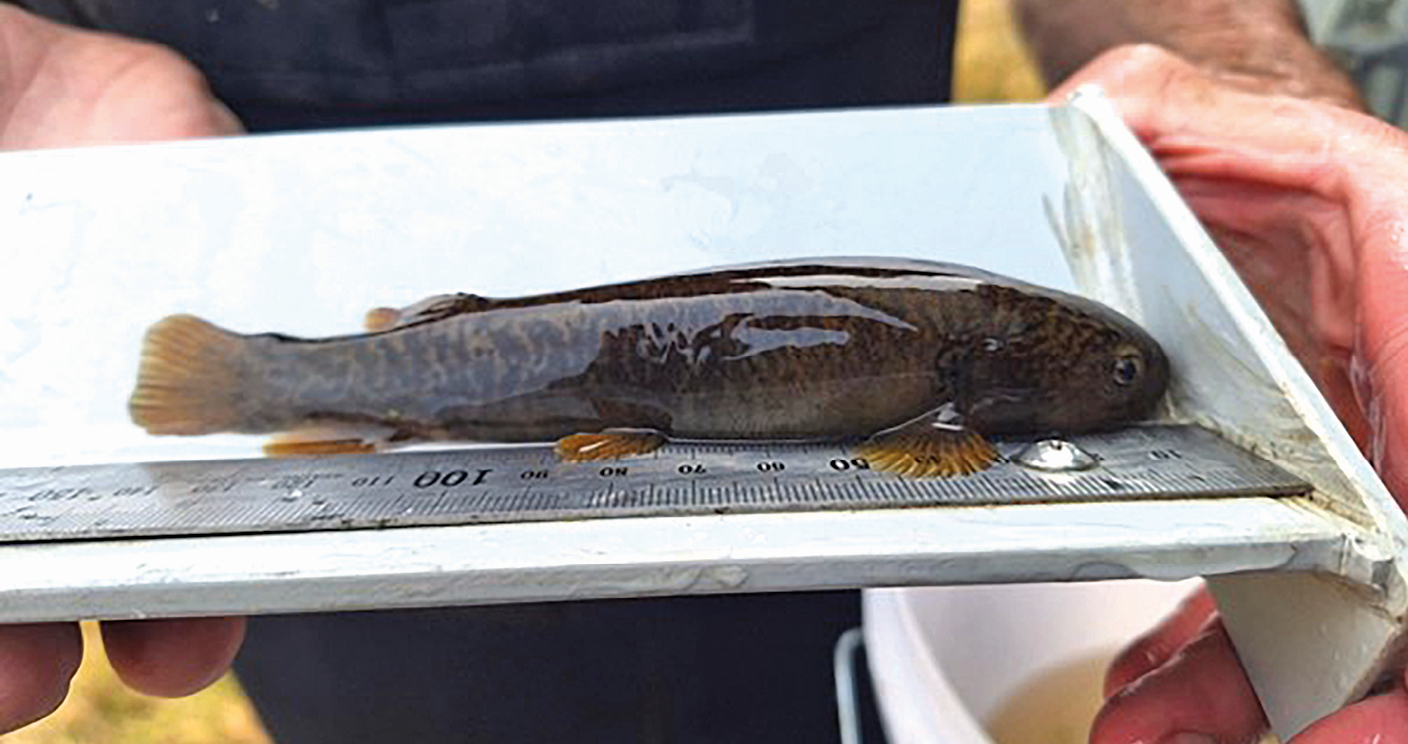 At 157 mm long, Gladys is the longest galaxias ever measured
At 157 mm long, Gladys is the longest galaxias ever measured
ORC’s Pete Ravenscroft thinks he might have discovered the oldest galaxiid in Otago — a dusky galaxias who resides in Burnt Creek, in the Waipori catchment.
Officially known as ‘Green Tag V93’, we’re calling her Gladys. Gladys is 28 years old and 157 mm long with beautiful brown spots. Finding Gladys presents a rare opportunity, as we don’t know how long galaxiids normally live for. Waterfalls acting as a barrier to trout who might want to eat her and the sediment free water of the tussocky high country have contributed to her longevity.
Galaxiids are a rare native fish species belonging to an ancient (from the time of the dinosaurs), scaleless fish family called Galaxiidae for the galaxy-like gold flecks and patterns on their backs.
Unlike whitebait, which migrate to sea, some non-migratory galaxiid species live out their entire lives in the stream or river in which they hatched. Over millennia, these populations have been isolated by geological events such as earthquakes and glacial movement and evolved into distinct species, each with their own individual features and stories.
What’s better than finding a long-lived galaxiid? Finding two! While Pete was at Burnt Creek he found another dusky galaxias — this time with a Red Tag 36E. Tagged in 2009 when she was 65 mm, she’s now 86 mm and over 17 years old.
From the Central Otago headwaters to North Otago, Dunedin and The Catlins, more than $850,000 of contestable funding has been made available in our annual ECO Fund and Incentives Funding programmes.
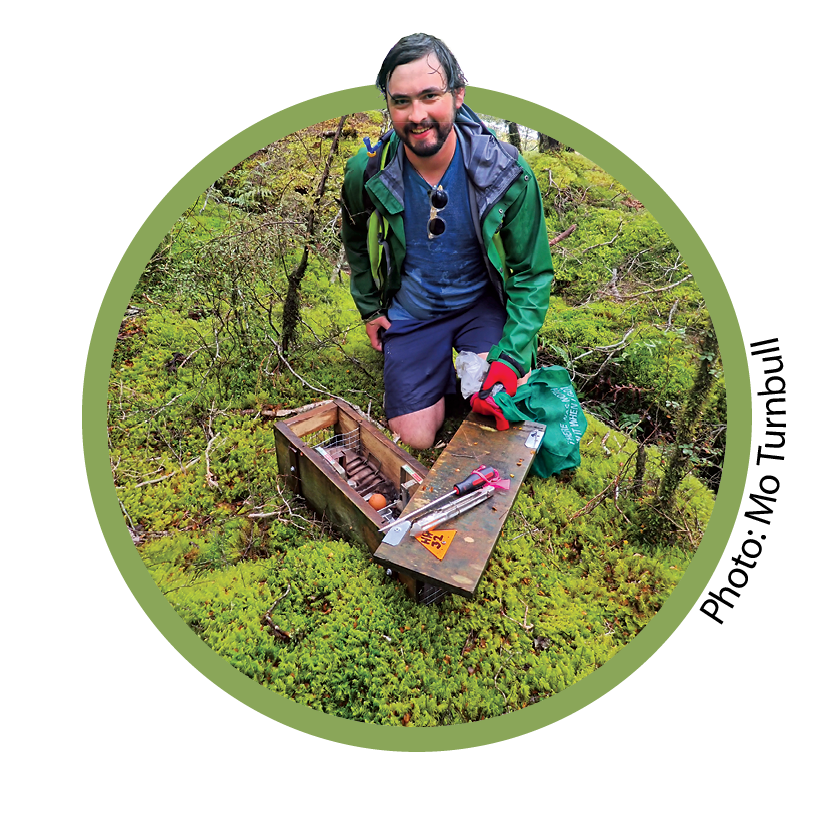
of Forest & Bird clears a trap
The funding supports community-driven projects which protect, enhance, and promote Otago’s environment.
Whether it’s controlling pests, protecting our natural landscapes, native revegetation or traplines to control predators, it’s great to see this money support the environmental programmes that matter most to communities.
A full list of this year’s recipients is at orc.govt.nz/greenlight
Future opportunities and challenges for Otago were front of mind in preparing the Long-Term Plan 2024-34.
This plan is developed with community feedback and sets the direction and focus areas of the council.
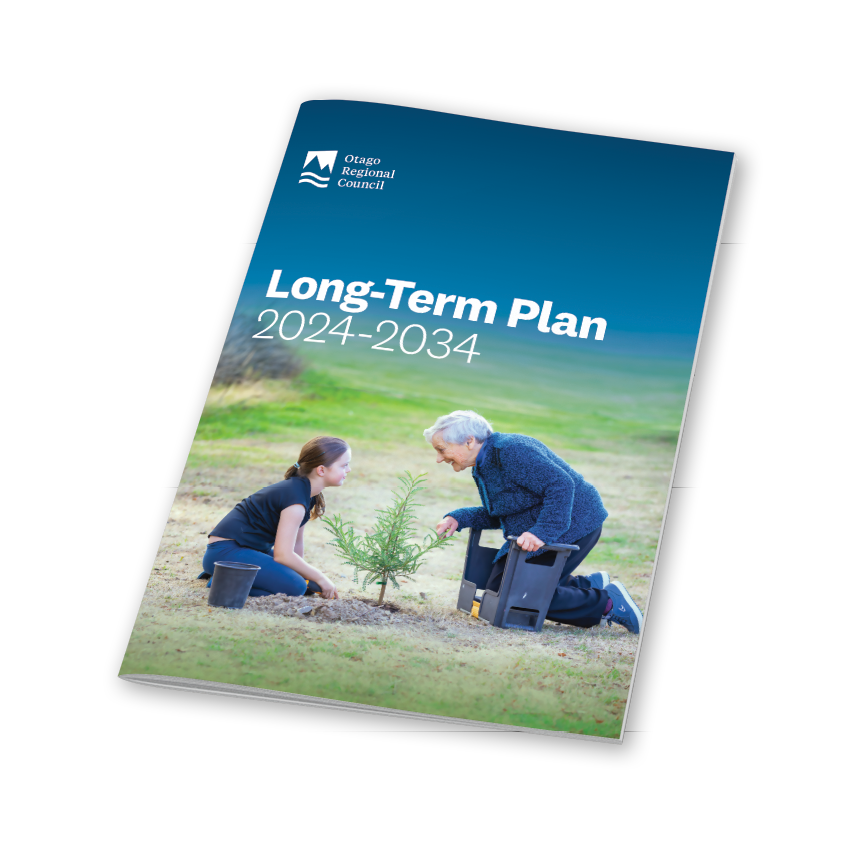 Key decisions made in the plan are:
Key decisions made in the plan are:
- Increased funding and services for public transport in Dunedin and Queenstown over the next 10 years.
- Investigation and trial of public transport for Ōamaru; Alexandra, Clyde, Cromwell to Queenstown; and Balclutha to Dunedin (including airport), and a business case for Wānaka.
- A new fund for large-scale environmental projects from 2025-26, with $2 million a year available.
- Changes to how work is funded through rates, who pays and where. Proposed expansion of rating areas for the wider Queenstown and Dunedin areas is not happening, but a region-wide rate for 20 percent of this rate will be introduced. Proposed changes to rates and zones for flood and drainage schemes will largely go ahead, except for the Lower Clutha scheme.
- Council agreed to changes that reduced spending, which means changes to average rates increases are 16.3% in 2024/25, 13.8% in 2025/26 and 8.7% in 2026/27.
For more information, go to www.orc.govt.nz/ltp
The proposed changes will affect the Dunedin and Dunstan constituencies.
Every six years, councils need to have a representation review to make sure they have the right number of councillors for the population they serve.
From 10 July, we will consult on how best to represent Otago. With significant growth in Central Otago / Queenstown Lakes, Council will consider reducing the number of councillors in Dunedin by one and adding one in the Dunstan constituency.
| Constituency | Current no. of councillors | Proposed no. of councillors |
| Moeraki | 1 | 1 |
| Dunedin | 6 | 5 |
| Dunstan | 3 | 4 |
| Molyneux | 2 | 2 |
Have your say: Online at orc.govt.nz/RepReview24
or by mail / drop off to: Attn Amanda Vercoe, Otago Regional Council.
- Dunedin office: 144 Rattray Street, Level 2, Philip Laing House, Dunedin 9016
- Queenstown office: 1092 Frankton Road, Alta House Level 1, Terrace Junction, Frankton, Queenstown 9300.
Survey closes 11 August 2024

Year 5 and 6 Queenstown Primary School students wanted to have “the voice of the water” heard by sharing an important environmental message with their community.
So, with help from Enviroschools Otago and ORC, the pupils’ artworks were used to design an advertisement to go on the back of a bus.
The ad promotes ORC’s Pollution Hotline — 0800 800 033. This is staffed 24/7 to respond immediately to reports of pollution of waterways, air, land, and coastal marine areas.
Thanks to Ritchies for bringing the bus to the students so they could see the result of all their mahi!
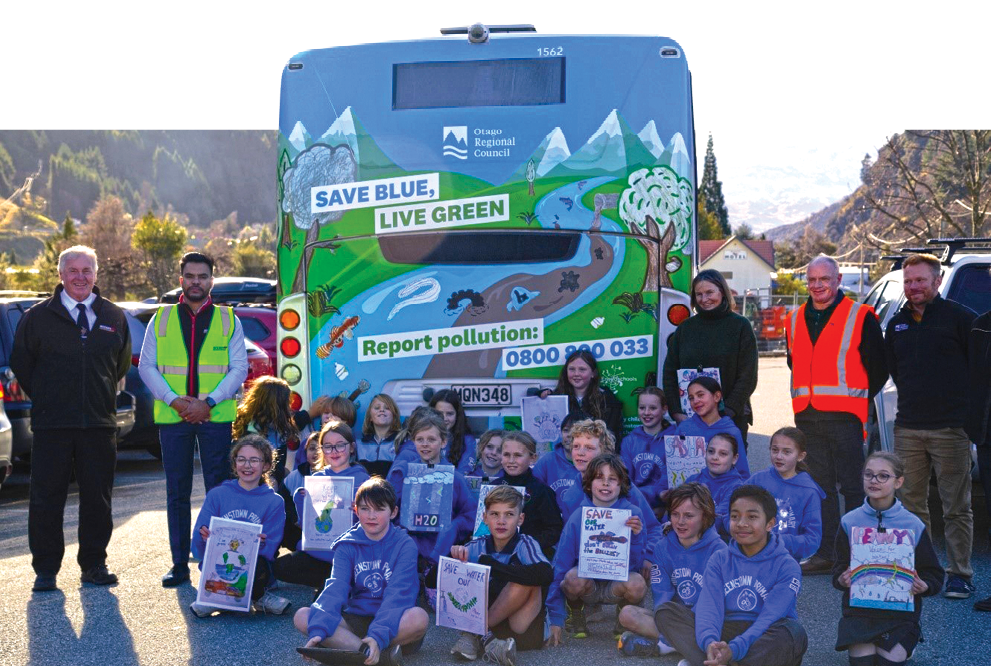
. . . our new Regional Enviroschools Coordinator.
Leisa’s role is supporting the Enviroschools team and Otago schools in their commitment to a long-term sustainability journey, making sure the Enviroschools kaupapa is part of Otago’s long-term future.
Contact Leisa.deKlerk@orc.govt.nz
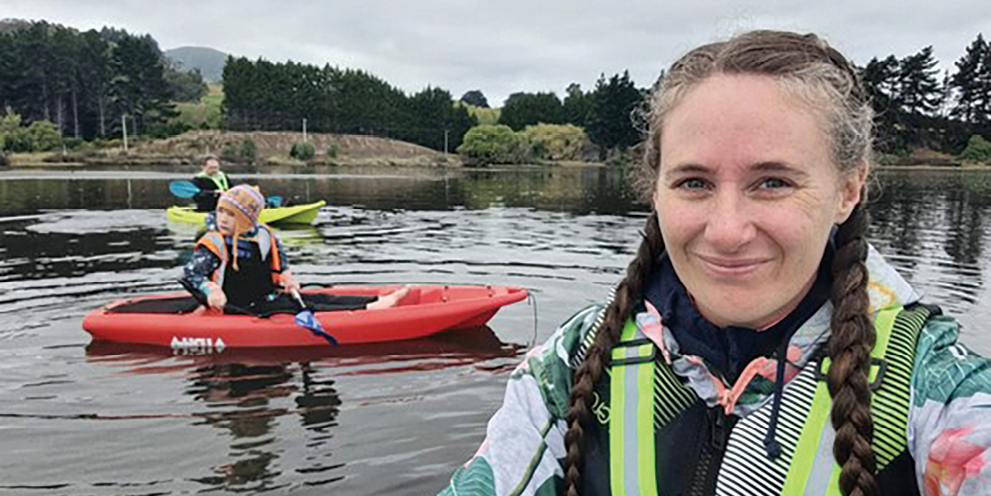
Julion Wright is an Otago Regional Council natural hazards analyst.
“I work to understand and monitor the processes that cause our communities to be affected by natural hazards, looking at the likelihood of a particular hazard and the consequences it might have.”
How does he do this?
“It depends — natural systems are inherently unpredictable and can behave uniquely, they are full of surprises.
“You need to understand the environment to figure out the likelihood and consequences of a hazard. If we were looking at a landslide, you could assess the likelihood by designing a study of the soils, gravels and rocks in that area and identify how often in the past a landslide has happened. This helps us understand the magnitude and frequency of different scenarios.”
How did he get into this work?
“I completed a Master of Science in coastal geomorphology, the study of the physical processes that shape the coastline.”
Tools of the trade?
We use a variety of tools to observe the earth’s surface, either on the ground or from a distance (remote sensing). An example of this is LiDAR surveys, which our team use frequently to analyse elevation, volume, and visual changes and then survey the changes through time.
What is he working on right now?
One of my current projects is the Roxburgh debris flows project. Debris flows are a type of landslide that are very fast and contain a lot of water — think of them as in between a landslide and a flood. Roxburgh is located at the base of the steep slopes of the Old Man Range, which feed creeks subject to debris flows. Our team wants to better understand the hazards and risks involved here.
Most fascinating part of the job?
“Nature’s ability to wow us. We have general theories about how environmental systems respond to certain drivers like waves or floods, then now and again something unexpected happens which demonstrates the complexity of nature.”
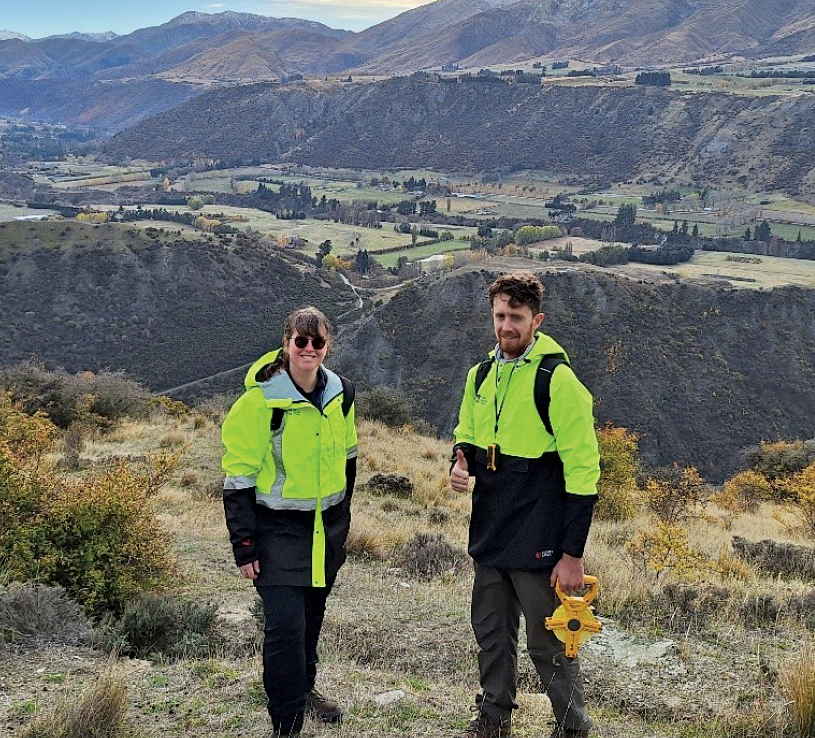
Anchored wave buoys were recently deployed by our ORC Harbourmaster team in a joint project with DCC and Port Otago at Taiaroa head, off St Clair and Taieri Mouth.
These buoys gather data on wave height, direction and duration, and send a warning in case of extreme conditions.
Data gathered can also be used by surfers, sailors, swimmers, researchers and fishermen.
The Taieri Mouth and Taiaroa Head buoys will provide valuable information to help improve navigational safety — all part of our most important job: keeping you safe around coastal Otago.
You can find the latest data from the buoys at orc.govt.nz/sofar
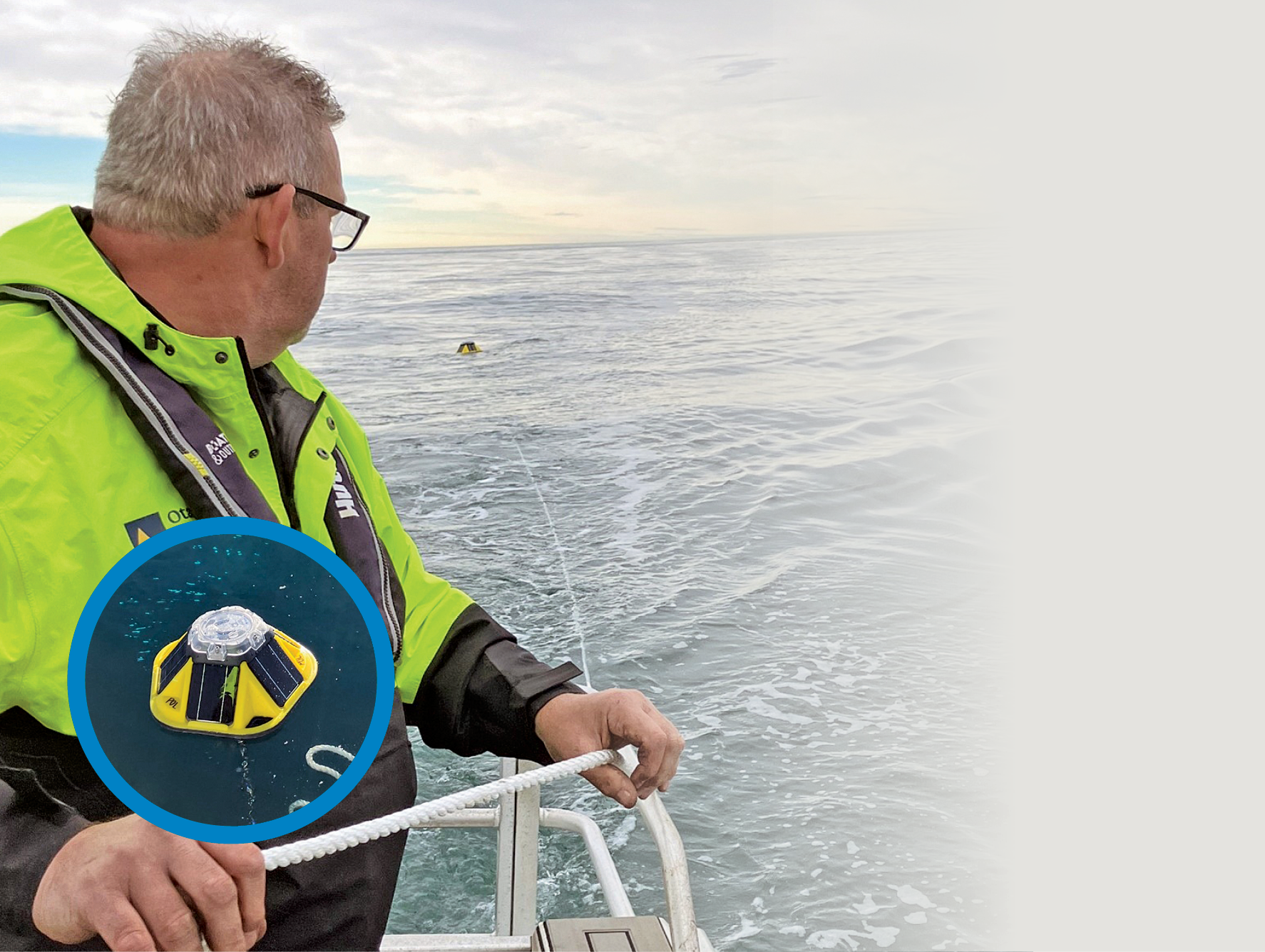
Town Belt Kaitiaki is a student-led group promoting and protecting the native biodiversity of the Dunedin Town Belt, involving 12 schools.
Pupils manage traplines, and tree planting is also a popular activity. The students are currently running a photographic competition, the only one of its kind in Dunedin, just for school-aged tamariki and rangitahi. No such thing as hibernating for Town Belt Kaitiaki!
